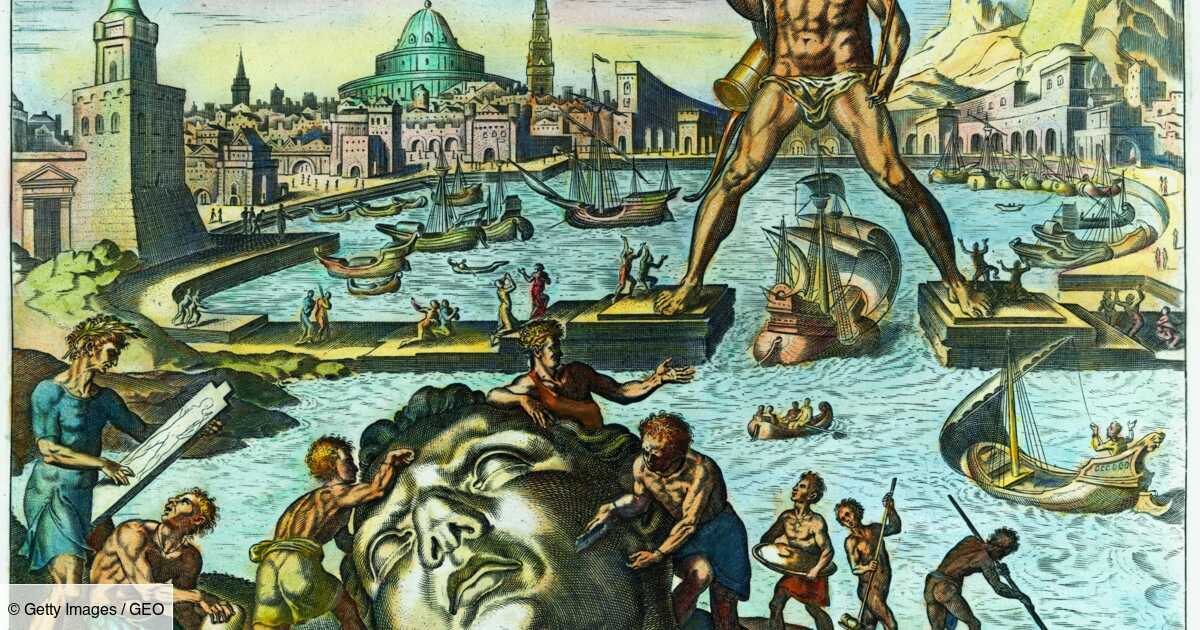The Colossus of Rhodes, one of the Seven Wonders of the Ancient World
It was in Antipater of Sidon, a Greek poet who lived in the 2nd century BC. J.-C, that we owe the oldest and complete list of the seven wonders of the world. Other versions of this list have been established by travelers throughout history but according to the canonical list which is authoritative today, these seven extraordinary buildings were:
- the pyramid of Cheops;
- the lighthouse of Alexandria in Egypt,
- the Hanging Gardens of Babylon in Mesopotamia (Iraq);
- the gold and ivory statue of Zeus at Olympia in Greece;
- the temple of Artemis at Ephesus;
- the tomb of Mausolus at Halicarnassus in present-day Turkey;
- the Colossus of Rhodes.
Only one of these wonders remains today, the pyramid of Kheops.
A bronze colossus 30 meters high
If the data concerning the construction of the Colossus of Rhodes are fragmentary, it is estimated that it was built around -292 BC. This colossus of wood and bronze would have been built to celebrate the resistance of Demetrios, son of the king of Macedonia Antigone the One-eyed, during the siege of Rhodes.
The inhabitants of the largest island of the Dodecanese decided to build a gigantic sculpture, the texts evoke 30 meters high, depicting Helios the sun god. Protector of the island of Rhodes, the Titan led his chariot in the sky every day to illuminate it.
Legend has it that the colossus marked the entrance to the port of Rhodes, ships passing between its spread legs. This element is however discussed, the dimensions of the port would indeed have required the erection of a statue with the dimensions much more imposing.
How was the Colossus of Rhodes destroyed?
The Colossus of Rhodes is the wonder of the world that had the shortest existence, barely fifty years. Between -226 and -227 BC, a major earthquake destroyed it as well as a large part of the city of Rhodes.
Only the two legs of the colossus remained, cut off at the knees. It thus remained amputated for several more centuries before being definitively razed to the ground around 654 by an Arab expedition led by Muʿawiya I, governor of Damascus, who conquered Rhodes. The tons of bronze and iron left in place after the statue collapsed were sent to Syria. Some Byzantine sources tell that 900 camels were needed to carry the last remains of the colossus.
Read also :
⋙ What would the 7 Wonders of the World look like in today’s landscapes?
⋙ What are the seven wonders of the ancient world?
⋙ Mexico: Chichén Itzá, one of the “new wonders of the world”
–


